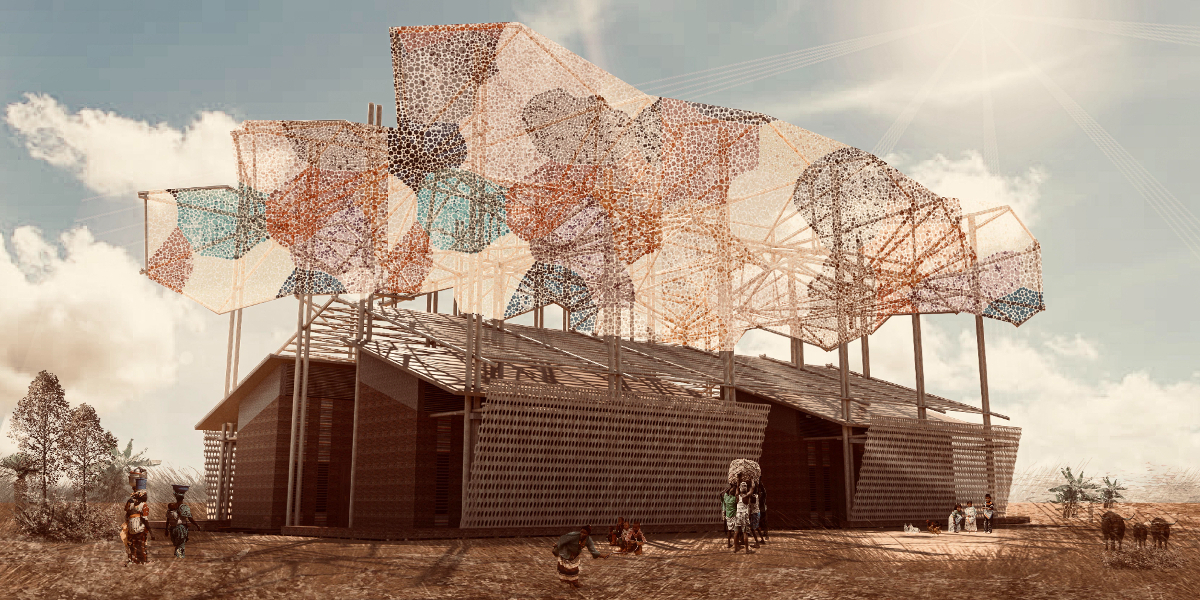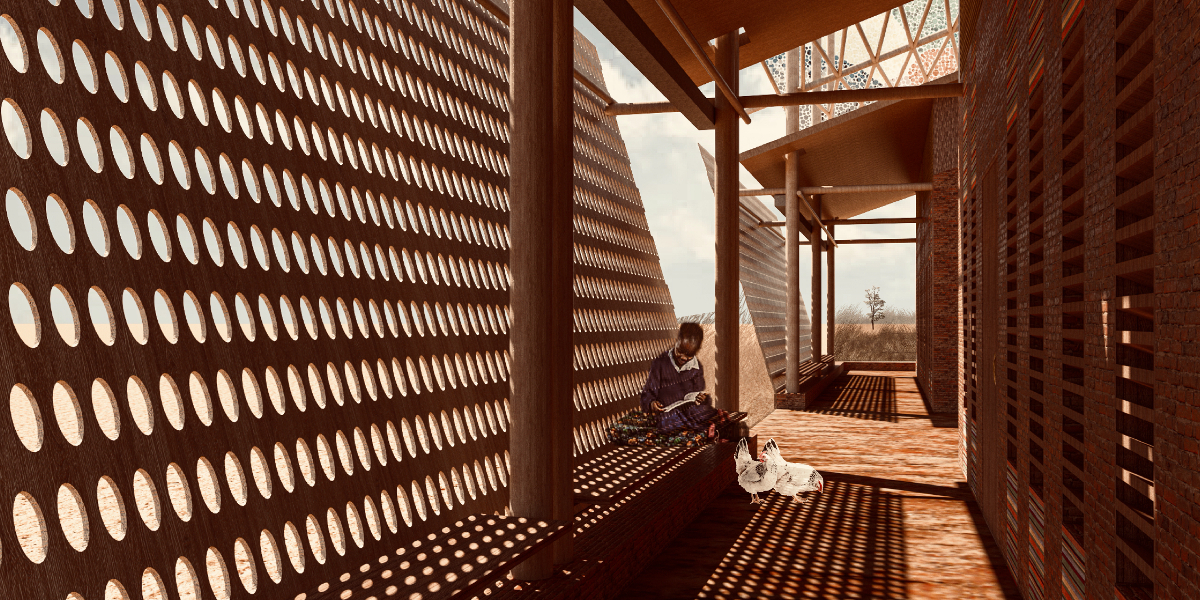AWARD YEAR
2023
CATEGORY
Home
GOALS
Good Health & Well-being, Clean Water & Sanitation, Affordable & Clean Energy, Trust, Tolerance & Empathy
KEYWORDS
Catchment, Residential, Africa, water pollution, easy to construct
COUNTRY
Taiwan
DESIGNED BY
Hong-En Lin
WEBSITE
https://www.behance.net/gallery/144762553/Pure-PowerDaily-Combat-Strategy-for-Water-Collection
Pure Power/Daily Combat Strategy for Water Collect
Help Africa or other regions with water problems to provide residential design with water harvesting
How does it work?
In terms of construction, local brick and wood are adopted as the main materials of construction. In the 'budget for reducing materials through local materials. In terms of configuration space, the bedroom space surrounds the public space, so that the bedroom is closely connected with the semi-outdoor space, creating a daily life space that can bring the family together. On the roof, the timber structure is combined with a woven installation that collects dew. Weaving techniques and structures intertwine to form a structure that echoes the concept. The curvature that the wooden structure can withstand acts as a support for the roof structure. , the roof cladding is covered with a structure, a waterproof layer (PVC) and a dew collection layer, which collects dew in the air in the morning and rainwater in rainy days, and is filtered and stored through a filtration system. Buildings featuring local weaves are collected and exhibited.
Why is it needed?
In Africa, where water resources have been polluted for a long time, and the long distance to get water is difficult, it takes one to three hours to get from home to the water source, but the water that can be obtained is muddy mud water. Water pollution is also the problem in Africa. One of the main causes of death is that they drink contaminated water for a long time. The poor environment prevents them from having other ways to get water. These contaminated water usually contains a lot of bacteria and parasites, which can cause illness or even death. Therefore, to obtain clean water is my hope that they can have clean water resources to use. After meeting the water resource problem, it can improve the problem of water extraction, clean drinking water, cooking and food hygiene in Africa.
How does it improve life?
Everywhere in the world has its own weaving culture. Given the limited environmental conditions and budget, I tried to use the local weaving culture as an idea, combined with local materials for housing, and combined with dew collection to create a clean water source for African residents. , easy-to-build, cost-effective homes that can be built elsewhere in 10 or 20 years.







